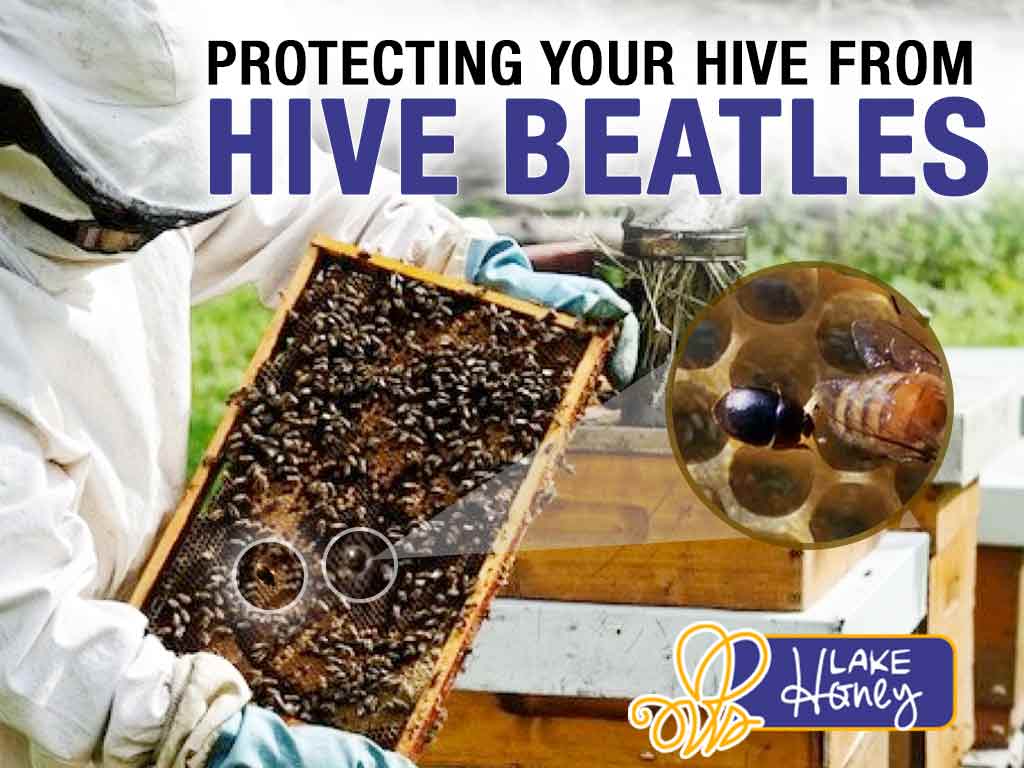For beekeepers, keeping the hive healthy is a top priority. With so many pests that could threaten your bee colonies, it is important to be aware of any danger to your bees or their home. One pest that all beekeepers need to be cautious of is the Small Hive Beetle.
What are Hive Beetles?
With origins in Sub-Saharan Africa, the small hive beetle has been wreaking havoc on beehives in North America since the late 1990s. First discovered in the North American in the Southeast United States, hive beetles have since spread to more than 30 states.
The small hive beetle, also known as Aethinatumida, is an invasive pest to honeybee colonies, and are known to cause damage to the honeycomb, stored honey, and pollen. In the U.S., small hive beetles are typically considered a secondary, or opportunistic, threat, as they can do more damage to a hive that is already weakened from other pests or diseases.
Easy to spot, the adult small hive beetle is black, or dark brown, and measures about half a centimeter. When they are present in a hive, bees will likely go on the defense. While the beetle’s hard shells make it basically impossible for bees to sting them, they can be chased into hiding. Often, bees will trap the beetles in cracks or crevices, preventing them from escaping. But the hive beetle has a trick up its sleeve. Somehow, they can stimulate the mouths of worker bees and trick the bees into feeding them. This allows beetles to survive in the hive, even if they are trapped, for long periods of time.
How do Hive Beetles damage bee colonies?
Known for having a large appetite, small hive beetles can eat their way through bee colonies, devouring honey and pollen. One of the reasons they are so dangerous to bees is because it is not only the adults that can damage in the hive, but the larvae that can harm a hive.
Small hive beetle larvae are typically long, cream-colored or golden grubs. Growing up to about ½”, the larvae eat their way through a honeycomb. This destroys honey, and makes the comb appear slimy and shiny. Adults, on the other hand, tend to leave waste in the honey, which causes it to ferment and change colors. When this happens, the fermented honey runs out of the honeycomb cells and is rejected by the bees. This also makes the honey unfit for eating. Beekeepers say a sure sign this is happening is the odor of decaying oranges, or citrus fruits.
While a healthy have can usually fend off the hive beetle, if too much damage is done bees will abandon their hive for one that is not infested.
What can I do to prevent Hive Beetles?
If you suspect that small hive beetles are invading your hives, there is an easy way to find them. Simply look. When the hive is open, you may see adult small hive beetles on the underside of the cover and on the top bars of frames. The larvae are usually clustered in the corners of the hive or on the frames. So, what can you do to protect your hives from small hive beetles?
- PREVENTION – Prevention is key to keeping your bees and hives protected. As a beekeeper, the best thing you can do is to ensure that your colonies are strong, healthy, and stress-free. By keeping the area clean and sanitary, you will make it less likely that pests will be attracted to your hives. Also, remove any materials that have been damaged, especially by cracks or warping, to give beetles fewer places to hide.
- HONEY REMOVAL – Knowing that larvae can eat their way through a honeycomb, consuming the honey and pollen, it is best to remove honey in a timely manner. Also, fewer honey supers will give the bees less territory to protect and enable them to respond to the treat of small hive beetles more effectively.
- MORE SUNLIGHT – Hive beetles do not like the sun, so placing your structures in full sunlight (with some afternoon shade) will make your hives less attractive.
- COVER THE GROUND – During development, small hive beetles are known to burrow into the ground around beehives. Once fully grown, the females breed and lay their eggs inside the hive. Covering the ground around your hives will make it more difficult for the larvae to mature and return to your hives.
- TRAPS & TREATMENTS – A variety of mechanical and chemical treatments are on the market to help curb small hive beetle problems. Typically, a mechanical trap will lure the beetles into a small opening but prevent them from escaping. If you decide to look at chemical treatments, be sure to follow the directions exactly, as some chemicals can also be harmful to your bees.
Finding Help
If you are inexperienced with this type of problem, your local beekeeping community is a great resource. Most new beekeepers find it greatly beneficial to learn from the experience of others who may be dealing with similar issues. You can join a local beekeeping club or find one online to stay connected with other bee enthusiasts.

